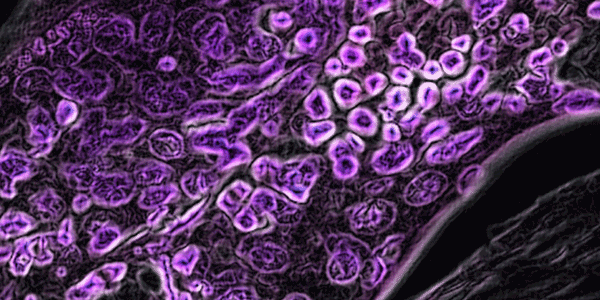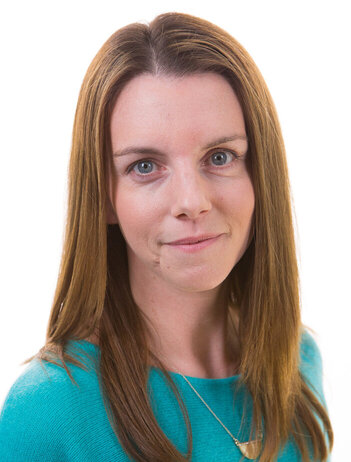
Just as a size 9 shoe fits only a certain number of feet, the standard “one-size-fits-all” cancer treatment approach doesn’t work for all patients. In fact, sometimes it actually does more harm than good.
A profound change in cancer care is under way, however. More precise and targeted therapeutic strategies based on new computational tools and machine learning are beginning to emerge, offering the potential to greatly improve care for cancer patients. And The Jackson Laboratory (JAX), through an innovative data resource called the JAX Clinical Knowledgebase (JAX-CKB), is helping to accelerate progress.
This resource is connecting doctors with scientists, giving clinical teams around the world access to detailed information that can result in more targeted treatments for patients and less trial and error. In other words, the JAX-CKB is helping oncologists find the most effective treatments for each of their patients, and it’s helping them find the information fast.
An incomplete picture
Oncologists today have access to thousands of cancer drugs, but have little guidance as to which one, or which combination, is the best fit for a given cancer patient.
While some oncologists still examine tumors on slides to determine a patient’s type and stage of cancer, advances like new tumor DNA sequencing technologies provide insight into the specific genomic mutations driving a patient’s cancer. This growing wealth of knowledge speaks to exciting advances in the field, while also adding new levels of complexity to the search for the right treatments.
For example, an oncologist might have to parse through thousands of papers to distinguish between clinically significant genomic mutations in a tumor and those that do not contribute to cancer onset and growth. Then there are thousands more papers that may help determine what targeted therapies might treat the patient’s driver mutations. This already arduous process is complicated by the fact that different papers often refer to the same genes by different names. It is easy to get lost in all the literature and can be difficult to come away with the full picture.
This plethora of disorganized information limits oncologists’ ability to prescribe the most personalized, targeted therapies that have the highest likelihood of success. It also prevents tumor boards — specialized teams that design treatment plans for patients — from reviewing more than a few patients each week, despite the needs of many more.
Capturing knowledge
JAX is streamlining this process with the JAX-CKB, a translational medicine platform that connects clinicians with researchers in real-time, allowing doctors and researchers to spend their time and energy more productively, and help patients more quickly and effectively.
Sara Patterson, Ph.D., manager of Clinical Analytics and Curation at JAX, is leading the development of the CKB platform, which functions like the Google or Bing search engines. The JAX-CKB is a database in which doctors can find the most relevant and the up-to-date information from researchers about a specific gene or therapy.

With search options including genes and treatments, JAX-CKB condenses the vast body of scientific knowledge about specific genes, treatment options, and clinical trials into succinct summaries. These summaries are currently available for 1700 genes that have downstream cancer effects and include links to original research.
In essence, the JAX-CKB provides decision support for oncologists answering two questions:
-
What genomic mutation is causing this cancer?
-
What targeted therapies can treat this tumor, based on its mutational profile
Patterson’s big goal is to do work that can help everyone: patients, doctors, researchers – anyone with a vested interest in the fight against cancer.
“I consider it scientific detective work,” says Patterson, who goes on to say that the work being done full time by her and her team is focused on presenting the best information to the world in a conveniently accessible format.
Machine learning and artificial intelligence
JAX-CKB has received more than 300,000 visits since 2018. While its current functionalities are making a difference for doctors, patients and researchers, the original curation process was astonishingly complex. The database is updated manually, which means that curators have to identify a seemingly endless amount of new papers in order to keep the database up-to-date.
To address this, Patterson and her team have developed a triaging process to help ensure curators are not missing important and relevant scientific papers. One of the lynchpins to this process is a public-private partnership with Microsoft’s Project Hanover.
Project Hanover creates artificial intelligence to advance precision medicine. Patterson explains that a process has been developed to identify papers that have connection between gene therapies and variants. Hanover (the AI) takes the guesswork out of it by identifying these papers and presenting the information to the researchers in a way (triaging) that allows them to go through data more effectively.
Patterson is currently trying to fully integrate the processes. The groundwork has been laid, but they are trying to bring the systems fully together to further increase the speed and power of Hanover.
“The process has been very organic and back and forth, and everyone is very excited about the progress,” Patterson says, going on to say that everyone from JAX and Microsoft are working together to create technologies that support doctors and researchers, with immense potential benefits for patients.
Working towards a cure for even the rarest and hardest-to-treat cancers.
This technology will empower curators by reducing their cognitive load and offer a quicker, more efficient method of updating the JAX-CKB. More importantly, it helps ensure that no important information — which ultimately could be the difference between life and death for patients — falls between the cracks.
Ever the “scientific detective,” Patterson doesn’t want to leave any facts behind, and says that the work with Hanover has been amazing, as even a full team working full time can’t keep up with all the new and emerging data, so having a learning computer organize the data in terms of importance and interest has been incredible.
In terms of achievement, JAX-CKB has rolled out more connections between germline mutations (hereditary genetic alterations in a germ cell such as egg or sperm) and somatic mutations (non-hereditary genetic alterations in a non-germ cell). It has expanded from 900 catalogued genes to 1700, with over 30,000 variants accounted for. A newer (patent-pending) feature provides relationships between individual variants and larger categories of variants that may have high level therapeutic evidence and gives more layers of relevant data for the medical practitioner. This additional information about could shed more light on what is causing a patient’s cancer and result in a more targeted therapy for the patient.
The quality of CKB is a point of pride for Patterson and her team. The CKB is the first software launch from JAX, and the team has received a lot of feedback that the data is well organized, and the user interface (UI)is easy to use. This is good to hear for Patterson, as ease of use and high quality of information is her primary focus. She told me that one of the proudest moments for her was receiving unsolicited feedback from a CKB user that referred to CKB as the “best knowledgebase currently in the world”
As the work continues, Patterson and her team, in partnership with Microsoft, are pushing ahead with the technology of the CKB and striving to get the best information into the hands of practitioners and patients worldwide. “You never know what you don’t know,” says Patterson, and with Hanover filling in the blanks, hopefully it’s only a matter of time until finding personalized cancer treatments is as easy as typing into a search bar.